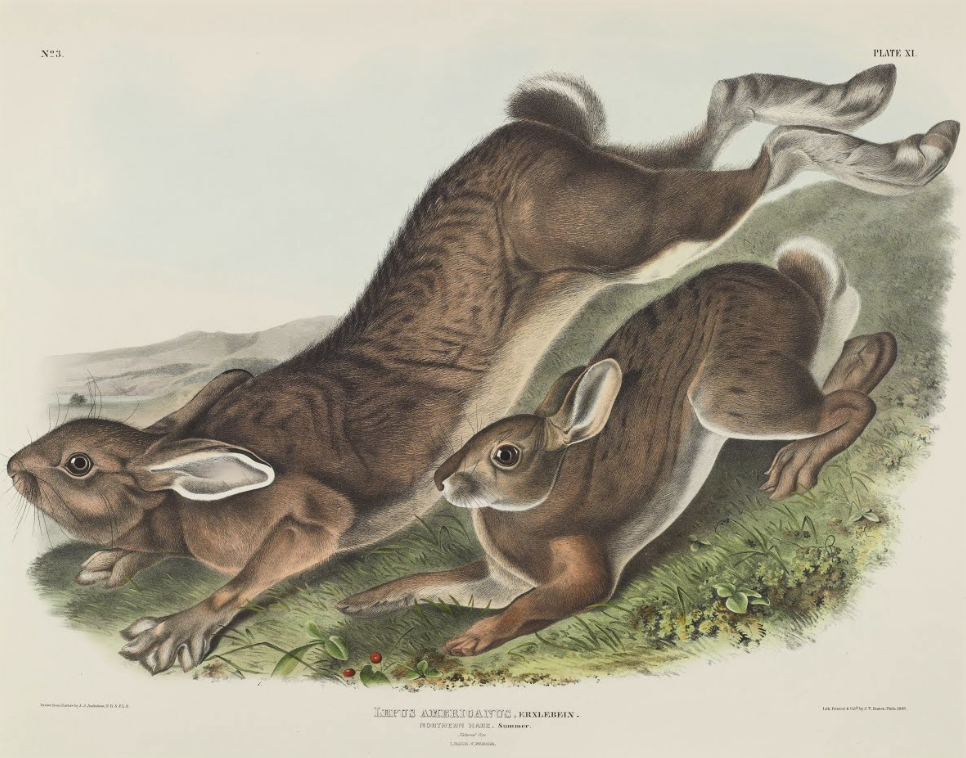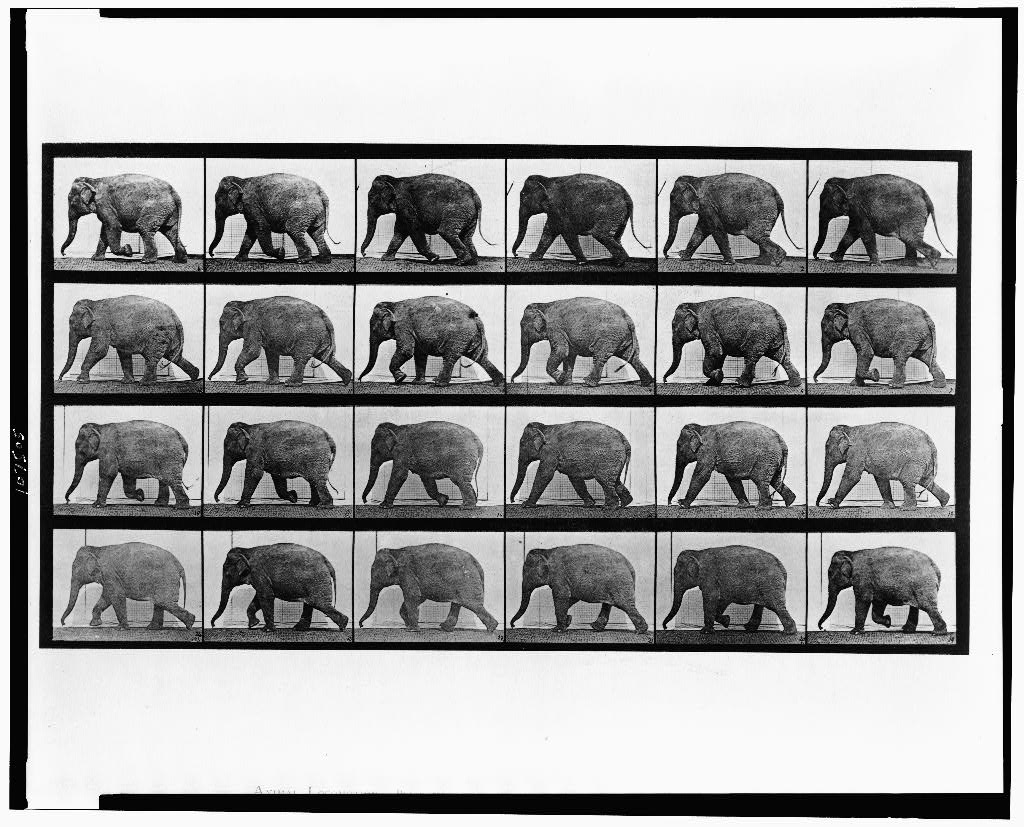The Hare and the Elephant
By Anonymous
Annotations by Rene Marzuk

(Original byline: Stories Collected by Sir Harry H. Johnston in his “Uganda Protectorate.”)[1]
One day a hare came upon an elephant standing expectantly at an ant-hole which had only that morning been dug by himself with a view to his evening meal. “What hard luck!” said the hare. “What can I do against that big hulking brute, who wants to steal my dinner? I will try a plan.” He returned to his home, made a torch of four reeds, and passed by the elephant at a great pace. “Who are you?” said the latter. “I am a hare.” “Where are you going?” “Oh,” said the hare, “we hear that an elephant is stealing our ants,” and then scampered off. A little farther on he put out the torch, and sneaked round by a by-way to his home, relighted the torch, and again went to the elephant. “Who are you?” said the big beast. “A hare.” “Where are you going?” “Oh,” said the hare, “my comrades called me because an elephant is stealing our ants,” and again went off quickly. As before, he sneaked round to his home, and then passed the elephant. “Who are you?” said the elephant. “I’m a hare.” “Where are you going?” “Haven’t you seen m y fellows pass this way? We are meeting in numbers, as we mean to have our meal which an enemy is trying to steal,” and again ran off. Going round once more to his home, he again came up with the elephant. “Who are you?” said the big animal. “I’m a hare.” “Where are you going?” “Are you blind that you haven’t seen my comrades passing? However, I’ve no time to talk.” The elephant, affected by the air of mystery, became uneasy, and thought it time to be off. When the hare came round for the last time he saw nothing but the wagging of the elephant’s tail in the distance. So he screamed out, “There he is! there he is! After him! After him!” and laughed uproariously as he heard the big brute crashing through the woods. He then went quietly back alone to his feast, chuckling as he thought of the splendid success of his stratagem.

“THE HARE AND THE ELEPHANT” THE CRISIS’ VOL. 16, NO. 6 (OCTOBER 1918): 270-71.
[1] Uganda was a Protectorate of the British Empire from 1894 to 1962. Sir Henry Hamilton Johnston (1858-1927), also known as Harry Johnston, worked as a colonial administrator of the Uganda Protectorate from 1899 to 1901. Johnston was also an explorer, botanist, zoologist and artist. His book The Uganda Protectorate was first published in 1902.
Contexts
Starting in 1912, the October issues of The Crisis, the official magazine of the NAACP, were dedicated to children. A typical edition of these children’s numbers would contain a special editorial piece and two or three literary works specifically for children, while still including the serious pieces about contemporary issues with a focus on race that The Crisis was known for. These October numbers were sprinkled with children’s photographs sent in by the readers.
In his first editorial for the Children’s number in 1912, W. E. B. Du Bois wrote that “there is a sense in which all numbers and all words of a magazine of ideas myst point to the child—to that vast immortality and wide sweep and infinite possibility which the child represents.”
The success of The Crisis’ children’s number led to the standalone The Brownies’ Book, a monthly magazine for African American children that circulated from January 1920 to December 1921 under the editorship of Du Bois, Augustus Granville Dill, and Jessie Fauset.
Definitions from Oxford English Dictionary:
stratagem: A skillful military plan, scheme, or approach, esp. a trick, manoeuvre, or ploy designed to deceive or surprise an enemy. Also in figurative contexts.
Contemporary Connections
Elephant poaching due to elephant ivory demand is a major environmental concern in Africa.
The Kataara Women’s Poverty Alleviation Group (KWPAG), a small community project in Uganda, promotes the creation of crafts with paper made out of elephant dung. This project seeks to combat elephant poaching, which “during the political turmoil of the 1970s and 1980s . . . decimated the elephant population in Uganda . . . from an estimated 30,000 elephants to less than 800.”
Video on how poachers threaten the survival of the African elephant.